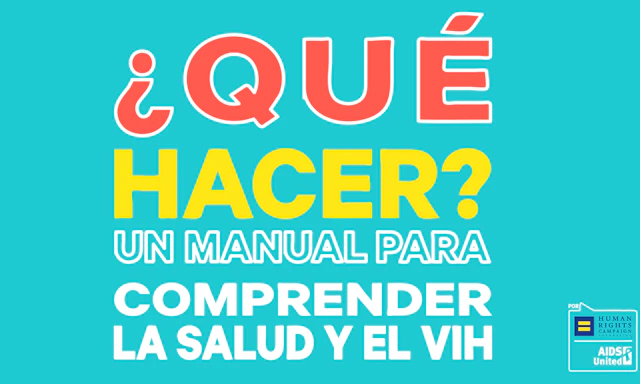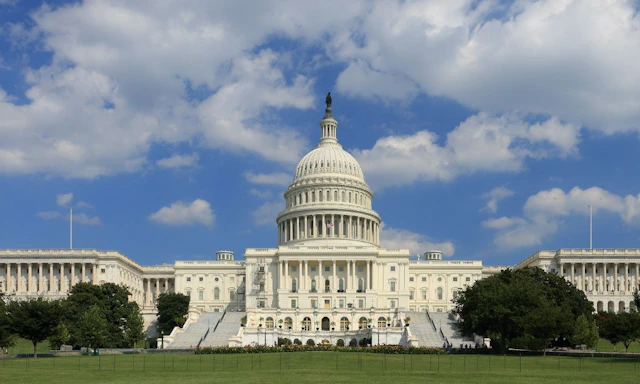
The Wage Gap Among LGBTQ+ Workers in the United States

In an HRC Foundation analysis of nearly 7,000 full-time LGBTQ+ workers, median earnings were about $900 weekly, about 90% of the $1,001 median weekly wage a typical worker earns in the United States, as reported recently by the Bureau of Labor Statistics.
Put another way, LGBTQ+ workers earn about 90 cents for every dollar that the typical worker earns. LGBTQ+ people of color, transgender women and men and non-binary individuals earn even less when compared to the typical worker.
Below follows a discussion on various economic disparities the LGBTQ+ community faces as well as evidence of the LGBTQ+ wage gap in the United States. All reported wages, for LGBTQ+ workers and ‘typical workers’(e.g, the median wage for all workers in the United States) reflect self-reported median weekly earnings for full-time (35 or more hours/week), non-farm worker employees employed in the public or private sector. Estimated wages for LGBTQ+ workers come from 6,816 LGBTQ+ workers enrolled in the 2021 LGBTQ+ Community Survey, a nonprobability sample of over 23,000 LGBTQ+ adults conducted during May and June 2021. Estimates from the typical U.S. worker reflect those reported by the Bureau of Labor Statistics for the third quarter of 2021. Additional information on the methodology can be found below, as well as in the methodology appendix document.

Economic Disparities Faced by the LGBTQ Community
Previous research has found that LGBTQ+ adults in the United States, on average, fare worse economically than their straight and cisgender counterparts. According to a 2019 Williams Institute analysis of Behavioral Risk Factor Surveillance System (BRFSS) data, about one in five LGBTQ+ adults in the United States (22%) live in poverty, compared to an estimated 16% of their straight and cisgender counterparts. In particular, the poverty rates of transgender adults (29%) and cisgender bisexual women (29%) in the U.S. tower over those of other groups. Furthermore, Black (40%) and Latine (45%) transgender adults are more likely to live in poverty than transgender people of any other race. Poverty was measured by comparing household income and size, to thresholds employed by the Census Bureau, who each year identifies family size-specific income thresholds, below which, a family is considered to be living in poverty. Those living in poverty are those who have a household income below the threshold for a family of that size in a given year and reflect a household income insufficient to support that family and its basic necessities and resources.
In the below report, we expand beyond poverty to consider disparities in individual wages across LGBTQ+ identity, gender, gender identity, and race/ethnicity. Given that wages tie directly into poverty measures, the wage gaps we find are directly tied to the higher rates of poverty seen among LGBTQ+ Americans, as well as help explain other instances of economic disparities seen among LGBTQ+ adults, including increased risk for food insecurity, or an inability to afford food, as well as homelessness and housing insecurity.
To learn more about disparities in poverty and other aspects of economic well-being experienced by the LGBTQ+ community, see the HRC Foundation's resource Understanding Poverty in the LGBTQ+ Community.
Cents on the Dollar
LGBTQ+ Pay Gap by Race
Racial/ethnic wage gaps seen among typical workers overall are replicated among LGBTQ+ workers, with many of those holding multiply marginalized identities of being both LGBTQ+ and a BIPOC race/ethnicity reporting lower wages–and larger wage gaps relative to the typical worker in the United States.
The wage gap for Native American and Black LGBTQ+ workers was larger than that seen for White LGBTQ+ workers, as well as LGBTQ+ workers overall (see Appendix for estimated median wages, including surrounding confidence intervals for these estimates, for each group).. In addition, while Asian/Asian Pacific Islander LGBTQ+ workers earned approximately the same as a typical worker in the United States, this represents a wage gap in and of itself: Among all workers in the United States, Asian/Asian Pacific Islander workers reported higher median weekly wages than the typical worker, though there is some nuance to this finding. Meaning that for LGBTQ+ Asian/Asian Pacific Islanders, the wage benefit associated with being Asian/Asian Pacific Islanders is only sufficient to result in LGBTQ+ Asian/Asian Pacific Islanders earning as much, rather than more, than the typical worker.
earn for every dollar the typical worker earns.
earn for every dollar the typical worker earns.
earn for every dollar the typical worker earns.
earn for every dollar the typical worker earns.
earn for every dollar the typical worker earns.
LGBTQ+ Pay Gap by Gender or Gender Identity
Working men (including both cisgender and transgender men) in the LGBTQ+ community earned approximately 4% less than the typical worker. For LGBTQ+ working women, who have similar earnings to all women, the wage gap relative to the typical worker increased to 13%. Transgender, non-binary, genderqueer, genderfluid and two-spirit workers earned even less. Transgender women, who hold both a marginalized gender (e.g., woman) and gender identity e.g. transgender), report the largest gap of all, earning approximately 60 cents for every dollar the typical U.S. worker earns.
earn for every dollar the typical worker earns.
earn for every dollar the typical worker earns.
earn for every dollar the typical worker earns.
earn for every dollar the typical worker earns.
earn for every dollar the typical worker earns.
LGBTQ+ Pay Gap by Race & Gender
Mixed trends emerged in the intersecting effects of race/ethnicity, gender, and LGBTQ+ identity on wages. LGBTQ+ women of all races/ethnicities, other than Asian/Asian Pacific Islander, earn less than the typical worker. However, Black and Native American.
earn, or about the same as the typical worker.
earn for every dollar the typical worker earns.
earn for every dollar the typical worker earns.
earn for every dollar the typical worker earns.
earn for every dollar the typical worker earns.
Conclusion
Our analysis of salary data from almost 7,000 LGBTQ+ full-time workers found that LGBTQ+ workers earn approximately 89 cents for every dollar earned in a week by the typical worker in the United States. Disparities were even more pronounced for LGBTQ+ women, transgender men and women, and LGBTQ+ people of color. Though we did not assess the underlying reasons for this disparity, it is likely that discrimination is playing a role. One-third (36%) of LGBTQ+ workers say they have experienced discrimination in the workplace, with 29% of LGBTQ+ people, 37% Black respondents, and more than half of transgender respondents saying this discrimination had significantly impacted their financial well-being.
Of note, the wage gap between LGBTQ+ and non-LGBTQ+ people is potentially even larger than what is reported here, as the present analysis only includes full-time workers. Previous research has repeatedly found that LGBTQ+ people are more likely to be unemployed or underemployed relative to their straight and cisgender peers, and these economic disparities have been acutely felt during the pandemic. Prior to the onset of the COVID-19 pandemic, nearly one in ten LGBTQ+ people were unemployed, compared with one in twenty non-LGBTQ+ people. In the first quarter of 2021, HRC and PSB research found that unemployment among LGBTQ+ people increased to 22% of LGBTQ+ adults and 24% of LGBTQ+ adults of color. LGBTQ+ workers overall, and LGBTQ+ people of color, were also more likely than the general adult population to have had their hours cut due to the pandemic. As a result, were we to include the wages of part-time/temporary workers, as well as non-wage earners, it is likely the gaps between LGBTQ+ and non-LGBTQ+ adults would widen beyond what is reported here.
A Call to Action
What should policymakers do to promote pay equity?
Support policy and legislation that will strengthen existing protections and further combat discriminatory practices.
Check out these 10 essential actions to promote pay equity.
What should employers do to promote pay equity?
Include employment nondiscrimination policy that includes both “sexual orientation” and “gender identity” across all operations.
Institute transparency policies on pay which are a pathway to identification of pay inequalities.
Ensure benefits packages are inclusive of both legal spouses and domestic partners, to prevent inequalities in benefit offerings.
Do an annual assessment of the collected pay data by sexual orientation, gender, and gender identity to ensure that your company is using the data to drive decision-making (e.g., formulation of leadership development programs and other policy development to combat the wage gap).
Methodology
Data on LGBTQ+ wages for this analysis come from LGBTQ+ adult respondents to the 2021 LGBTQ+ Community Survey, a national survey of more than 23,000 LGBTQ+ adults that was administered in May and June of 2021 by market research firm, Community Marketing & Insights and sponsored by HRC Foundation. The present analysis is restricted to the 6,815 United States-based LGBTQ+ respondents who are non-farmworker, full-time (35+ hours/week) employees in the public or private sector. Individual weekly wages were self-reported by respondents, or, where wages were reported for another time period, converted to weekly wages. Median wages reflect the midpoint (e.g. 50th percentile) of the distribution of wages within each group as reported–in other words, this reflects the estimated wage where half of a given group earned less, and half earned more. All estimates are weighted using population weight constructed by the HRC Foundation, which allow the LGBTQ+ Community Survey to approximate the demographics of the LGBTQ+ adult population as a whole. For more information on the survey, sample, and methodology used, as well as tables containing the estimated median wages and surrounding 95% confidence intervals for each group described below, see the methodology appendix.
In order to determine the wage gap, LGBTQ+ median wages computed as described above were compared with the median usual weekly wages for the ‘typical worker’ (aka the median wage for all workers in the United States) as released by the Bureau of Labor Statistics (BLS) from the third quarter of 2021, estimated at $1,001. BLS estimates are derived from the Current Population Survey. Results are not directly comparable, as they are from two different surveys, recruited using different sampling frames, and rely on different approaches to approximate true wages for their target population. In addition, Native American earnings are also missing from the Bureau of Labor Statistics. As a result, some caution must be employed when interpreting final results. However, in the absence of sexual orientation/gender identity questions on the Current Population Survey, all efforts have been made to ensure results from the 2021 LGBTQ+ Community Survey can approximate those that would have been expected from the Current Population Survey. In particular, the 2021 LGBTQ+ Community Survey included a large sample of over 6000 workers, and methodologies and definitions employed in the 2021 LGBTQ+ Community Survey follow those published by the Bureau of Labor Statistics, including adopting the same definition of salary and wage workers, as well as asking questions about their usual earnings in ways similar to the Current Population Survey. In other words, data are specifically on the earnings of full-time LGBTQ+ salary and wage workers, following the methodology and definitions published by the Bureau of Labor Statistics.
Love conquers hate.


